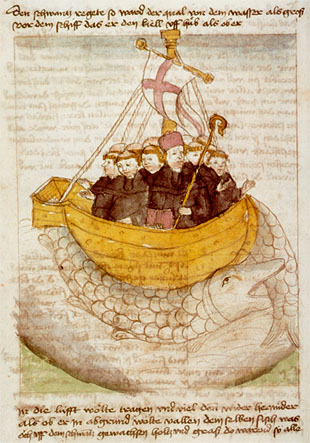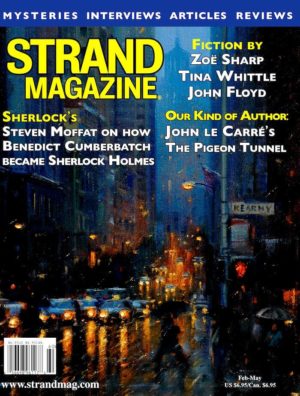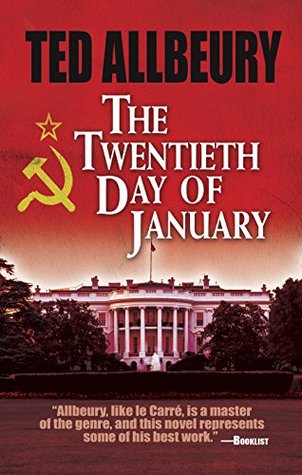
Florida madness waits for no one. The Sunshine State exists merely to make other states feel better. Usually I adopt a mocking stance, but sometimes the subjects are too dark, too sick for levity. Two of the most disturbing stories– one about a truly sick honeymooning couple– I’ve removed from today’s lineup. At least we finish with a warming palate cleanser. Let the revue begin.
Water Hazard
Tampa, FL. Golf courses once employed kids to retrieve wayward balls from ponds, lakes, and water hazards. In Florida, courses can get a bit rough. Ask Scott Lahodik. He’s worked as a golf ball search-and-rescue professional for nearly three decades. Recently a Charlotte alligator violently objected to Lahodik disturbing his collection. Lahodik thinks it might be time to retire.
Cutting the Cord
Deland, FL. A professional skydiver chose to die doing what he loved. This might have been easier to take if it weren’t for people who loved him.
How Bow Dah
Boynton Beach, FL. Without adding to her publicity/notoriety, a 13-year-old girl has become (in)famous for bad behavior and poor enunciation. Violent and apparently proud of bottomless ignorance, she appeared on Dr. Phil where she told him he wasn’t nothin’ until she graced his show. She’s also shown up in music videos, television shows, and courtrooms. Our home-grown (sort of) girl is an experience… and not a good one.
Wired
Boynton Beach, FL. That teen girl isn’t the only bad actor from Boynton Beach. Police arrested a man with an electronic devices wired to his penis. Prosecutors will no doubt file a, er, battery of, um, charges. Wouldn’t it be ironic if the ‘electronic device’ was a GPS? That would be embarrassing.
Jacksonville, FL. We’re not done with penises yet, but a Duval County man nearly was. He managed to shoot himself in one of the worst places he could shoot himself. This is reminiscent of the Florida woman who was, well, caught pleasuring herself with a loaded pistol. Some people like to live dangerously.
Armed and, well, Armed
Deltona, FL. A Volusia County man shot himself in the arm. This is the USA– people shoot themselves all the time. However, this man didn’t realize it until he changed his shirt… three… days… hence. (Shh! I always wanted to use that word.)
Listen folks, this is Florida. It’s freaking hot here. People sweat. God knows how many days he’d already been wearing that garment. We should change shirts three times a day instead of every three days. I know it’s difficult to detect one’s own body odor, but how bad do you have to stink when even a bullet hole under your arm goes numb?
Voter Fraudster, Oh Yeah
Sarasota, FL. You know who Steve Bannon is, icon of alt-right rags and radio, and a fixture in the White House. You know about the desperate quest to prove some kind– any kind– of voter fraud. The committee need look no further than Florida.
Not only did Stephen Kevin Bannon register to vote in New York, he also registered to vote in Florida. For a home address, he listed a vacant house he never lived in and scheduled to be torn down.
That’s one. Now the fraud committee has another 199,999,999 voters to check out.
Aramis Ayala
Orlando, FL. The Supreme Court has forced Florida to back down on a number of legal issues. In its excitement to execute, SCOTUS has required capital cases to be reviewed, which resulted in instances of actual innocence. The Court also directed Florida to stop incarcerating children for life. Florida judges made paltry efforts to see that children convicted of crimes less than murder have a chance, however slim, of seeing the outside world again before they die.
Orange and Osceola Counties recently elected a black prosecutor, a major step for Florida. However, our governor (you already know my criticisms about Rick Scott) virtually stripped her of prosecutorial powers and reassigned cases to other state attorneys. To rephrase, Governor Rick Scott has removed State Attorney Aramis Ayala from major cases, nullifying our election of this woman.
Setting aside racist overtones, the crux of the matter centers around the governor’s lust for capital punishment while Attorney Aramis Ayala has expressed doubts about the morality and effectiveness of the death penalty. No doubt Scott has his Attorney General pin-up babe Pam Bondi trying to figure out a legal justification for his actions.
My opinion? Governor, WE elected her as OUR state attorney, not yours. Screw up the rest of the state and leave us alone.
Shoot First… The rules are different here.
Tallahassee, FL. Florida proudly originated the Shoot First / Stand Your Ground law detested by police and despised by prosecutors. It’s thought to thwart prosecution of approximately one hundred homicides a year (including children), triple the average. Now Florida has introduced a new and improved SF/SYG law designed to make it even more difficult to prosecute killers in a state already in love with death.
Miami-Dade Circuit Judge Milton Hirsch has ruined the party by declaring the amended law unconstitutional. Governor Scott suffered the vapors at the news and waved his blonde bombshell Attorney General Pam Bondi into action. Miss Bondage is presently trying to find a legal argument to shut down the judge’s ruling.
He Who Laughs Last…
Cocoa, FL. No doubt you’ve heard the news that four Florida ƒ-tards stood around joking, recording, deriding and reviling a man as he drowned instead of saving him. For once, I suffer a paucity of adjectives.
The question has been raised, why do we rush to implement Shoot First / Stand Your Ground laws but don’t have a Good Samaritan law? Folks, this is Florida.
And also, why should a civilized society require laws to do the right thing? Oh yes, this is Florida. But the final story might make you feel better.
Stone the Samaritans
Lakeland, FL. Our hysterical society has developed such a fear of men with children, it’s become dangerous for both. A Polk County man attending a softball game noticed a lost child wandering around. He tried to help her find her wayward family.
When one of her parents finally bothered to notice the little girl was missing, he ran down the man he spotted with his daughter and, attacking him from behind, badly beat him. Police tried to tell the foolish father the stranger was trying to help, but the man refused to accept that possibility. Maybe the family felt a little guilt itself, but they took to Facebook to falsely deride the man who helped and demand police arrest and prosecute the helper as a sexual predator.
He Who Writes Last…
Panama City, FL. A family– nine people in all– found themselves in trouble and unable to swim back to shore. Good Samaritans organized a sort of bucket brigade, a chain of 30 to 50 possibly up to 80 heroes and heroines extending far into the rip tide to save the family.
Kudos and congratulations. Sometimes Floridians get it right.






































